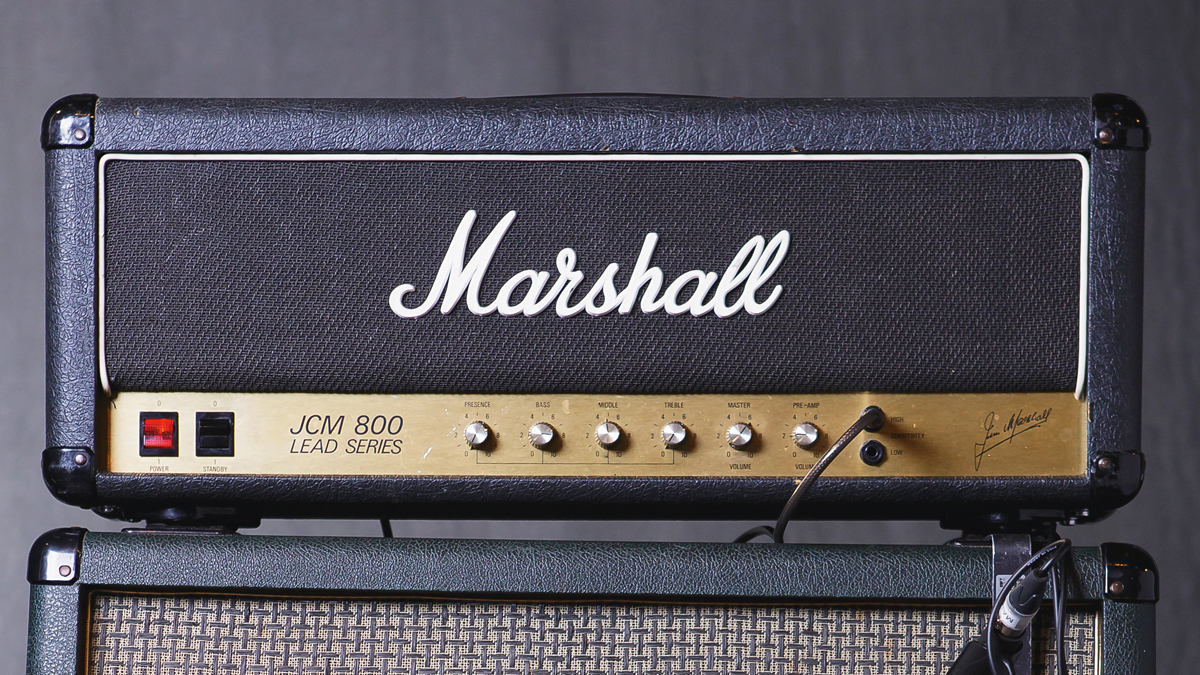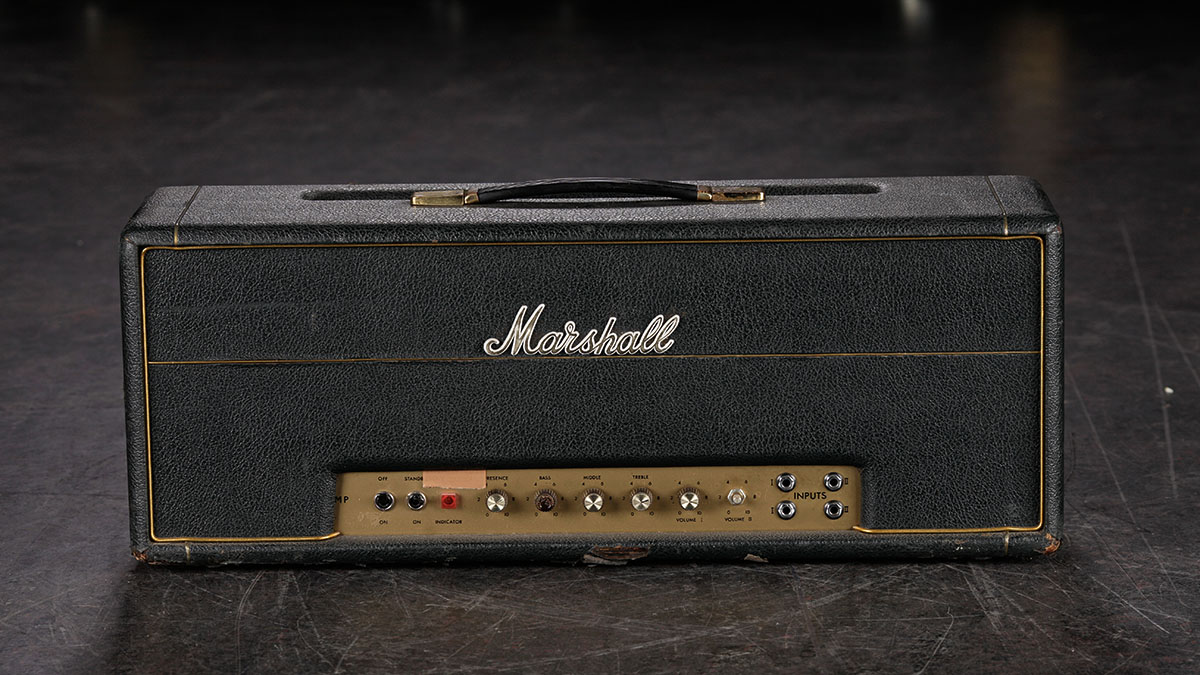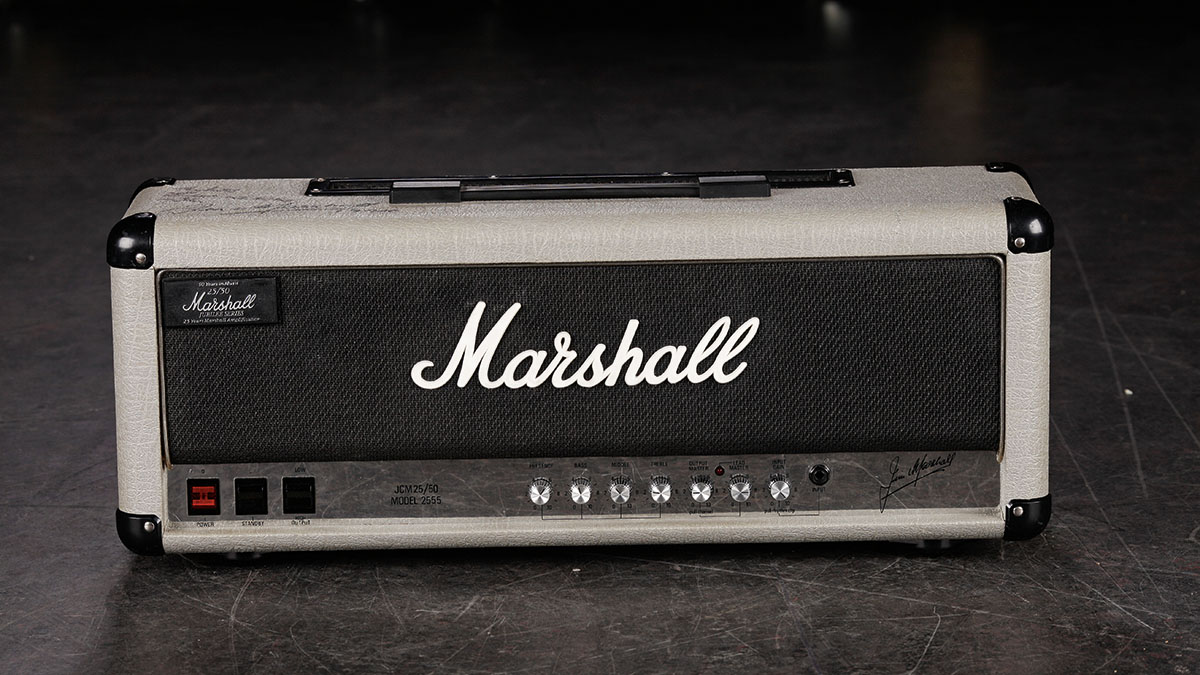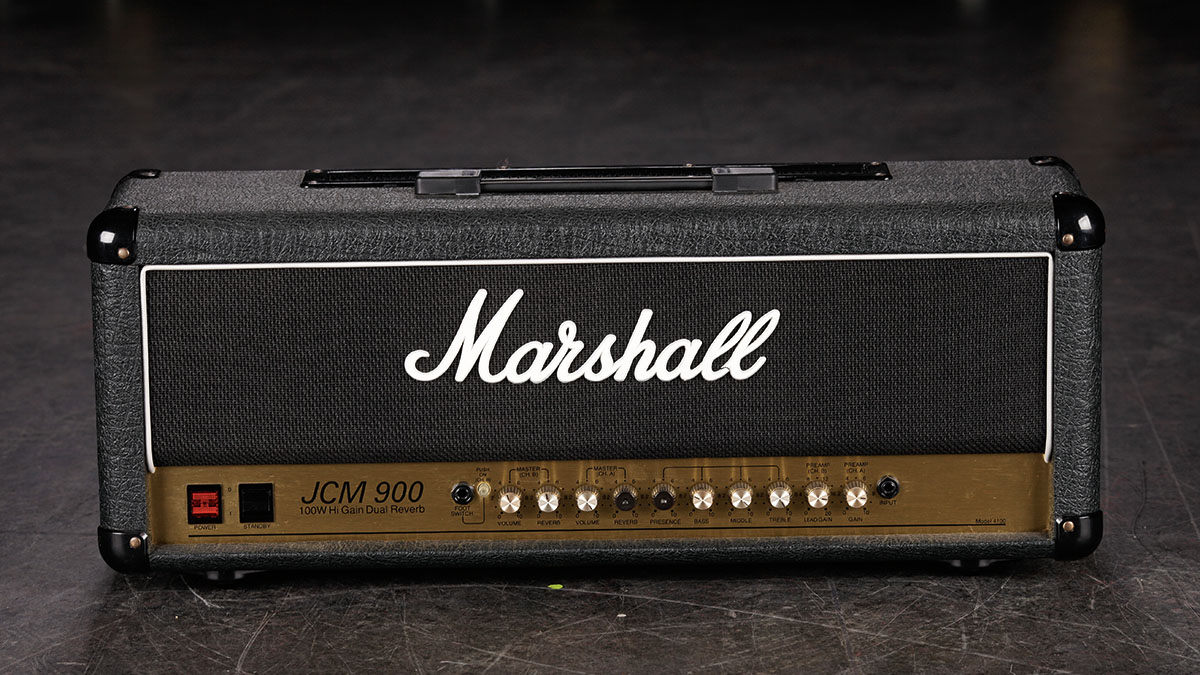Marshall guitar amp heads: what you need to know
From JTMs to JMPs and JCMs, Marshall’s product specialist, Steve Smith, tracks the evolution of these iconic amps

“The JMPs were born in the Plexi era – which is generally thought of as the period from the mid-60s up until the '70s when we were using Plexiglas plastic panels,” Marshall’s Steve Smith explains. “When Marshall first began building amps in the early '60s, we had the JTM45s. And then in the mid-'60s, 50- and 100-watt amps appeared, which evolved from the JTM45 – the model 1987 being a 50-watt amp, and the 1959 model a 100-watt amp.
“Both of these models were originally available right up until 1981, although there aren’t many of the later ones around because people weren’t asking for them by then.
“There were so many variations of amps that it can get confusing. For example, the model 1992 – as used by Lemmy – was the bass version of the 1959, but from the front it just looked like a 1959 model. So on the back it would say Super Bass, whereas the 1959 was labelled Super Lead.
“Although people tend to think of the JMP amps as '70s models, the first time JMP actually appeared on an amp was in 1967. That’s when you first saw JMP written on late-'60s Plexis such as the 1987 and 1959. Essentially, they’re the same as before, even though the name was different.”
1. JMP

“JMP stands for Jim Marshall Products – the amps that came before were labelled JTM, which stands for Jim and Terry Marshall. It was in 1975 when Marshall introduced the first ‘master volume’ amps. And those are often what people refer to as a JMP. Even though we had amps with JMP written on them before, it’s more the 70s styling and look that people associate with the JMP name.
“When Marshall introduced the first master volume amps in ’75, they used the 50-watt 1987 and 100-watt 1959 as the basis for the new 2204 and 2203 amps [respectively]. At the same time, the 1987 and the 1959 were available in the Standard series.
“In ’76, the cosmetics changed at the request of the distributor, Rose Morris. And that’s when the larger logo, white piping and illuminated rocker switches appeared. That lasted until 1981 when the JCM800 range came out.”
Get The Pick Newsletter
All the latest guitar news, interviews, lessons, reviews, deals and more, direct to your inbox!
2. JCM800
“By the 80s, everyone seemed to want a Marshall stack. JCM800s appeared in 1981 after Marshall’s 15-year deal with Rose Morris ended, which Jim Marshall was very happy about as it meant that Marshall could distribute independently.
“Rose Morris had warehouses full of stock when the deal ended, so Marshall made all the JMPs obsolete by revising the look with the JCM800 line. JCM800 amp heads are recognisable by the full-width panel and cloth front, rather than the JMP-style vinyl front.
“There’s not much difference between the JCM800 and JMP circuits, however. In fact, you could still get the 2204 and 2203 master volume models, and for a short while you could also get the 1987 and 1959. JCM stands for James Charles Marshall. There’s no concrete answer as to where the ‘800’ part came from, but he did have an old Jag with the license plate JCM 800.”
3. Silver Jubilee

“The Silver Jubilee models came out in 1987 to commemorate 25 years of Marshall and 50 years of Jim Marshall being involved in the music industry. These anniversary amps were a limited run, but by popular demand we brought them back. They can be an acquired taste, but some well-known players use them, like John Frusciante, Joe Bonamassa and Slash.
“They’re very comfortable amps to play, and the diode clipping means you can get saturation at a much lower volume. Rock players love them, but the clean is really nice, too. Wayne Krantz uses a Jubilee clean. Marshall clean tone is very much underrated – and it’s great for pedals, too.
“This was the first time where you could attenuate the power output and there were two push-pulls on the panel: the Rhythm Clip turned the clean channel crunchy, and the other push-pull allowed you to change channel (also footswitchable).”
4. JCM900

“The JCM900 series evolved from the JCM800 series in 1990. Marshall realised that a lot of people were getting their amps modded as more and more came in for repair. Coming out of the late '80s it was all about more gain, and 900 series amps were popular in the grunge and indie scene. At that time, that’s what people were chasing. The gain control goes to 20 on the 900s, the others go to 10.
“JCM900s don’t have the same bottom-end and growl as the JCM800s, and the 900s tend to sound brighter and more scooped as well. There were two main models available: the 2100 Hi Gain Master Volume MK III and the 4100 Hi Gain Dual Reverb. The 2100 is a single-channel amp with no reverb and two master volume controls. The 4100 was the more popular of the two. It has two channels – clean and overdrive – and a reverb for each.”
Rod Brakes is a music journalist with an expertise in guitars. Having spent many years at the coalface as a guitar dealer and tech, Rod's more recent work as a writer covering artists, industry pros and gear includes contributions for leading publications and websites such as Guitarist, Total Guitar, Guitar World, Guitar Player and MusicRadar in addition to specialist music books, blogs and social media. He is also a lifelong musician.
“The world’s most convenient all-tube amp head”: Steve Vai-backed firm Synergy has unveiled a tiny amp head that lets you swap in tones from some of the world’s biggest amp builders
“Modified connects us with a long-standing tradition of modifying Marshall amps that dates back to the 1970s”: Marshall unveils factory modded takes on the 1959 Plexi and JCM800 – tipping its cap to the amp wizards of rock’s golden era


![A black-and-white action shot of Sergeant Thunderhoof perform live: [from left] Mark Sayer, Dan Flitcroft, Jim Camp and Josh Gallop](https://cdn.mos.cms.futurecdn.net/am3UhJbsxAE239XRRZ8zC8.jpg)








